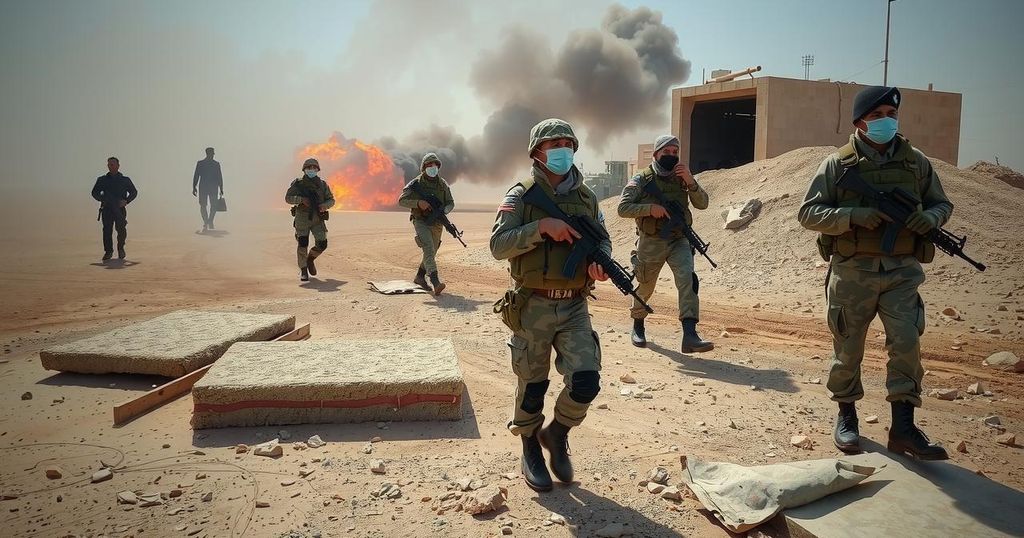Iran Withdraws Forces from Syria, Signaling a Shift in Regional Dynamics

Iran has largely withdrawn its military forces from Syria following the rebels’ victory over the Assad regime, resulting in diminished Iranian influence in the region. Iranian troops have either fled or been ordered to withdraw as the new Sunni leadership, led by Hayat Tahrir al-Sham, rise in power. Their rapid success is viewed as a significant setback for Iran’s regional ambitions, especially with President-elect Trump preparing to take office amidst ongoing tensions.
Iran has nearly completed the withdrawal of its forces from Syria, marking a significant shift in the geopolitical landscape following the rebels’ decisive victory over the Assad regime. According to Western and Arab officials, Iranian military personnel, who had long supported President Bashar al-Assad, have either fled or received orders to depart since the rebels gained control just weeks ago. The abrupt evacuation has raised concerns regarding the future of Iranian influence in the region, as vast quantities of abandoned military equipment and vehicles have been discovered near the Lebanese border, indicating a hurried retreat.
Barbara Leaf, the US State Department’s leading official on Middle Eastern affairs, affirmed this withdrawal, stating, “Pretty much, yes,” to inquiries about the extent of Iranian forces leaving Syria. This withdrawal is unprecedented, especially considering Syria has been a crucial ally for Iran, enabling it to support various militant factions and maintain a foothold against Western and Israeli interests. Now, with Assad’s regime crumbling, Tehran faces significant challenges in re-establishing its influence.
The newly assertive Sunni leadership among the rebels, particularly the group Hayat Tahrir al-Sham, has made it clear they oppose both Iran and the Assad regime vehemently. Their leader, Ahmed al-Sharaa, noted that their swift victory represents a major setback for “the Iranian project in the region back by 40 years.” Observers believe that the rebel governance will inherently distrust Tehran, making it difficult for the Iranian Revolutionary Guard Corps to regain its previous stronghold significant to their regional strategy.
The Iranian government has taken notice of this emerging challenge, with ideological hardliners calling for a renewed resistance against the new government in Syria, which they have labeled as “takfiri terrorists,” a term historically applied to ISIS. This symbolizes emerging tensions, especially in light of mounting reports of possible unrest escalating in Damascus. Furthermore, this shift comes as President-elect Donald Trump approaches his inauguration, raising the prospect of increased military actions against Iran, particularly concerning its nuclear ambitions.
The conflict in Syria has been intricately linked to Iran’s geopolitical strategies in the Middle East. Iran’s alliance with the Assad regime allowed it to project power and establish military presence through groups such as Hezbollah. The recent rapid changes in power dynamics, with rebel factions gaining control, signify a new chapter that threatens to dismantle Iran’s established foothold. The withdrawal of Iranian forces not only alters the military landscape but also reflects broader implications for U.S. foreign policy and security in the region.
The withdrawal of Iranian forces from Syria marks a critical juncture in regional geopolitics, indicating a potential decrease in Iranian influence. The rebels’ swift victory over the Assad regime exacerbates this situation for Tehran, as they face increasing hostility from newly established governance. The evolving dynamics present new challenges for Iran, which must navigate a changing landscape against a backdrop of growing tensions in Syrian politics and broader Middle Eastern stability.
Original Source: nypost.com








